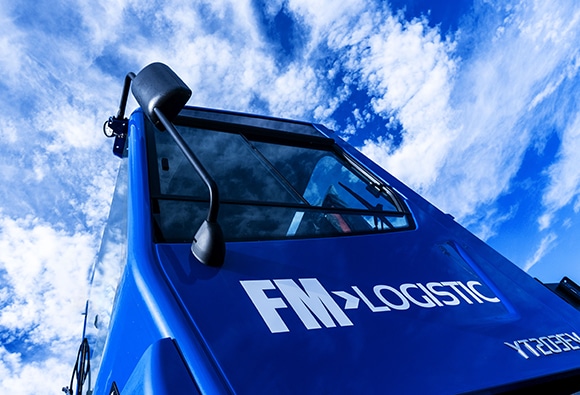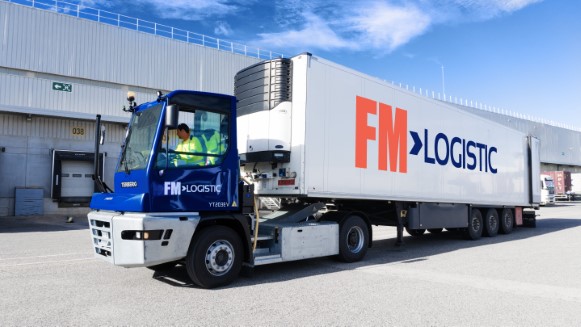In the world of logistics and the transportation of temperature-sensitive products, it is crucial to understand the differences between the various transportation methods available. In this article from FM Logistic – global logistics operator, we will explore the specifics of isothermal, refrigerated and reefer freight service, and how each plays a vital role in the supply chain. As consumer demands evolve and become more demanding, it is critical for logistics companies to understand the options available and choose the right solution to ensure the integrity of products during their journey. Join us as we unravel the distinctive characteristics of these types of transportation and their impact on the industry!
Characteristics of isothermal transport
What types of goods is it used for?
Isothermal transport is mainly used for goods that require constant temperature control during transport, but do not necessarily need to be refrigerated or frozen. It differs from other vehicles because it cannot produce low temperatures autonomously. This vehicle is created to be kept at a constant temperature and is geared for short distance routes. Some common examples of goods transported using this method are:
- Pharmaceuticals: many drugs and medical products need to be kept at a constant temperature to preserve their efficacy and avoid possible damage.
- Sensitive chemicals: some chemicals, such as reagents or flammable materials, require a stable temperature environment to avoid unwanted or dangerous reactions.
- Non-perishable foods: although they do not require refrigeration or freezing, certain foods such as cereals, flours, canned goods, oils and dry goods may require isothermal transport to protect them from extreme heat or cold conditions.
- Cosmetics and personal care products: many beauty and personal care products, such as creams, lotions and perfumes, can be affected by extreme temperatures, so isothermal transport guarantees their quality.
- Electronic products: some electronic components may be sensitive to extreme temperatures and require isothermal transport to avoid damage to their operation.
Characteristics of refrigerated transport
What types of goods is it used for?
Refrigerated transport is used for goods that need to maintain a constant and controlled temperature below ambient temperature. This type of transport is essential to preserve the freshness, quality and safety of certain heat-sensitive products.
This type of vehicle is equipped with:
- Compressor: the compressor is a key part that is responsible for compressing a refrigerant gas and propelling it through the system. At the same time, it maintains the pressure and converts the gas into liquid in the condenser.
- Condenser: the condenser is like a “heat exchanger” that receives the refrigerant fluid from the compressor. Here, heat from the refrigerant is transferred to the walls to cool it back to liquid.
- Evaporator: the evaporator is located inside the trailer and has a valve that controls the amount of refrigerant released by the refrigeration system. Its main function is to cool the environment by absorbing heat from inside the trailer.
Some examples of goods transported using this method are:
- Perishables: this includes fresh fruits and vegetables, meats, poultry, seafood and dairy products. These foods should be kept refrigerated to prevent bacterial growth and ensure freshness and safety.
- Frozen products: frozen foods, such as ice cream, frozen vegetables, frozen fish and seafood, require transport at even lower temperatures to maintain their quality and texture.
- Dairy products: milk, cheese, yogurts and other dairy products also benefit from refrigerated transport to prevent spoilage and maintain freshness.
- Heat-sensitive pharmaceuticals: some drugs and pharmaceuticals may lose their efficacy if exposed to higher temperatures. Refrigerated transport ensures that they are kept within the appropriate temperature ranges.
- Flowers and plants: fresh flowers and potted plants are sensitive to heat and can wilt quickly if not kept in a refrigerated environment during transport.
Characteristics of refrigerated transport
What types of goods is it used for?
Refrigerated transport is mainly used for goods that need to be kept at very low temperatures, generally between 12º and -20º, these vehicles have some device for the production of cold and low temperatures. This method of transport is essential to preserve the freezing, quality and safety of certain heat-sensitive products. Some examples of goods that are transported using refrigerated transport are:
- Frozen foods: this includes products such as ice cream, frozen vegetables, frozen meats and fish. These foods should be kept at freezing temperatures to preserve their quality and texture.
- Deep-frozen products: some products, such as convenience foods or ready meals, may require deep-freezing temperatures to maintain their flavor, texture and nutritional value for extended periods of time.
- Cold-sensitive pharmaceuticals: some drugs and pharmaceuticals, such as vaccines and biological products, require refrigerated temperatures to maintain their stability and efficacy.
- Heat-sensitive chemicals and samples: some chemicals and laboratory samples may need to be kept at cool temperatures to avoid unwanted reactions or degradation.
- Cosmetic and beauty products: some cosmetic and beauty products, such as certain types of creams and skin care products, may require cold temperatures to preserve their quality and consistency.
ATP transport regulations
Ministry of Transport, Mobility and Urban Agenda – ATP: The ATP (Agreement on the International Carriage of Perishable Goods) is an international agreement that establishes the rules and requirements for the international transport of perishable goods. These standards focus mainly on the preservation of the cold chain and the quality of products during transport.
The ATP agreement establishes the following aspects:
- Vehicle certification: vehicles used for the transportation of perishable goods must meet specific requirements and obtain a valid ATP certification. This certification is granted after verifying that the vehicle meets established technical standards, including its thermal insulation capacity and the efficiency of its refrigeration equipment.
- Inspections and controls: transport vehicles are subject to periodic inspections and controls to ensure compliance with ATP standards. These inspections may be carried out by competent authorities designated by the countries that have ratified the agreement.
- Labeling and documentation: perishable goods must be properly labeled with indications of the required storage temperature, as well as information about the cargo and the responsible company. In addition, detailed records and documentation must be kept during transport.
It is important to note that ATP regulations vary in their implementation and application depending on the countries and transport routes involved. Countries may have additional or specific requirements, so it is essential to know the specific regulations in each location.
Temperatures according to the type of perishable goods
The temperatures required for the transport of perishable goods may vary according to the type of product:
- Fresh foods: most fresh fruits and vegetables are transported in the temperature range of 0°C to 10°C. However, some fruits or vegetables may require specific temperatures outside that range.
- Meat and poultry: fresh meat and poultry are usually transported at temperatures close to 0°C or slightly above freezing, around -1°C to 4°C.
- Dairy products: milk and dairy products, such as yogurts and cheeses, are usually transported at temperatures of 2°C to 8°C to maintain their freshness and quality.
- Fish and seafood: fresh fish products are transported at very low temperatures, generally between -18°C and -1°C, to ensure freezing and maintain freshness.
- Ice cream and frozen products: ice cream and other frozen products are transported at temperatures below -18°C to maintain their freezing and texture.






